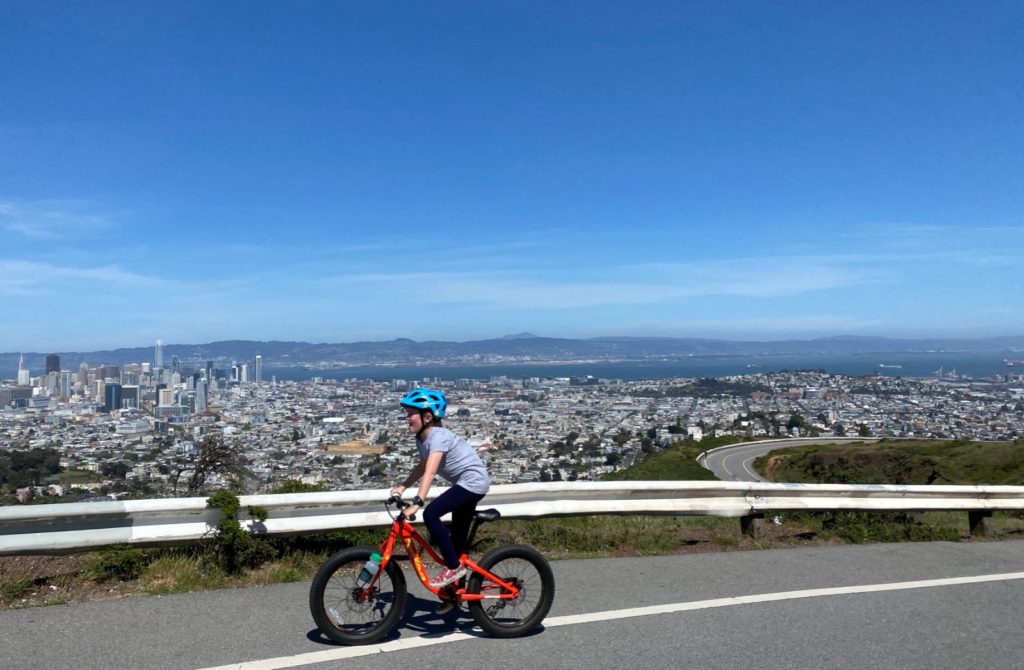Cover Yourself! Liability Insurance for the Cyclist
In the course of our work, we’ve spoken with cyclists facing many different situations. Sometimes it is a cyclist who has been injured. Other times we’ve been asked what happens when a cyclist hurts someone else. A common underlying issue? Cyclists specifically, and people in general, frequently don’t understand the types of insurance they need to compensate themselves if they are injured, or to protect themselves if they injure someone else.
In this section, we provide a simple overview of the liability insurance we think is important if you’re going to be on the road. This article does not cover health insurance or disability insurance. Those, too, are strongly recommended for everyone.
And if you’re too busy to read the reasoning for all the insurance and what it does, you can always skip to the end. There’s a bullet point summary that tells you what you should get.

AUTO INSURANCE: When we sit down with an injured cyclist, one of the initial questions we ask is whether the cyclist has an automobile insurance policy. Why? Because unfortunately, many drivers carry low-limit auto insurance policies, or no insurance at all. In California, one in three drivers drives without insurance (even though that is illegal) or with the legal minimum of $15,000 per person, per incident. That minimum barely covers the cost of an ambulance ride and emergency room visit, let alone more serious injuries.
Auto insurance policies have what is known as Underinsured (alternatively known as Uninsured) Motorist coverage. This usually goes by the abbreviation UIM. You can check your level of coverage by looking at your auto insurance declarations page, and we can tell you without looking, it is probably too low. Why is underinsured motorist coverage important? Because in most situations, so long as there’s contact with another vehicle, underinsured motorist coverage will cover you. That means if you are struck riding a bicycle, walking across the street, or riding in someone else’s car, your own underinsured motorist policy is there for you.
Don’t tune out if you live car-free. You don’t have to own a car to have auto insurance. Most auto insurance companies will offer what they call non-owner operator policies for car-free households. They tend to be very inexpensive. An illustration? Our colleagues the Coopers of Coopers LLP in San Francisco, live car-free. They renewed with USAA for $1,000,000 of auto coverage and UIM coverage for $400 for 2020. An additional benefit beyond underinsured motorist coverage? The policy will typically cover you when you rent a car, so that you won’t have to pay the expensive rental-car insurance.
We consider UIM coverage absolutely essential, and the cheapest disability insurance a cyclist can purchase.
How UIM coverage works varies from state to state. In most states, your UIM coverage will be the same as your per-person, per-incident limit. That means if you carry a $250,000/$500,000 policy, where any one person in an incident will get up to $250,000 and the total paid for any incident is up to $500,000, your UIM coverage will usually be $250,000.
Some caveats:
Hit and runs: If the incident is a hit and run, most policies require the injured person to make a police report or report the incident to the insurance company within 24 hours of the incident; otherwise, the incident will not be covered. Carriers do this with the belief that it reduces the chances of someone who crashed from later making up a hit and run after learning that underinsured motorist coverage might pay for some of the injury expenses.
Motorcycle UIM: Motorcycle policies don’t have the same type of UIM, and their UIM coverage is typically expensive. If you have a motorcycle but no car, it is probably more cost-effective to add a non-car owner policy than increase your underinsured motorist coverage on your motorcycle policy.
Exhausting the primary policy: If you decide to represent yourself, or are helping someone with a claim, know that you have to exhaust the driver’s policy before underinsured motorist coverage kicks in. What does that mean? If the driver has insurance, the driver’s insurance must pay the full policy limits, and not a penny less. Your own insurance will typically want a copy of the driver’s declaration page, the settlement agreement, and the check. Ask for a copy of the declaration page as part of the settlement.
Stacking: In some states, the underinsured motorist coverage “stacks” on top of the driver’s policy, and in others it does not. What does this mean? If it stacks, you can obtain a maximum of the driver’s policy plus your underinsured motorist coverage. To illustrate this, imagine the scenario where the driver has $15,000 in coverage and you have $250,000 in underinsured motorist coverage. You would receive a maximum of $265,000 if you were seriously injured. In a non-stacking state like California, you would receive $15,000 from the driver and up to $235,000 from your underinsured motorist coverage, for a maximum of $250,000.
Consider the loss, not the cost: When evaluating how much insurance to obtain, most people worry about how much it costs. They rarely consider what a serious injury might cost. Imagine a situation where you may not be able to work again. Unfortunately, whether one is in a car or on a bike, these types of injuries can occur. How much would it cost to take care of you? Your family? Typically that number is very high. Take that number into account, not the annual insurance premium.
RENTER’S OR HOMEOWNER’S INSURANCE: Come on, why are we talking about this type of insurance when we’re talking about the proper coverage for cyclists? Because sometimes cyclists inadvertently hurt someone. That can be a pedestrian you fail to notice or it can be another cyclist that you inadvertently clip. When that injured person makes a claim against you, and you then try to get your auto policy to pay the claim or defend you, you’ll immediately realize why we’re covering this here. Auto policies provide liability coverage, i.e., make payments to someone you’ve hurt and pay for a lawyer to defend you in a lawsuit against you, when you are driving your car or someone else’s. They don’t cover you when riding a bicycle.
What does? A renter’s or homeowner’s policy. These policies are also sometimes known as personal liability policies. Most people get them to cover the threat of loss or damage to possessions or one’s home. They also provide liability insurance should you inadvertently hurt someone. This can be someone tripping over the skateboard in your hallway or you mistakenly taking out a wheel on the Friday commute (or the spirited Saturday morning ride). The liability coverage limit will determine the maximum your renter’s or homeowner’s insurance will pay for a claim. We recommend finding out the minimum required limit for an umbrella policy, setting that as your liability limit, and obtaining an umbrella insurance policy. What’s that? Funny you should ask…
UMBRELLA OR EXCESS INSURANCE: Finally. Thanks for staying with us. We know this is not the latest Lee Child novel, but it is important. Umbrella insurance, sometimes known as excess insurance, is a policy that, like an umbrella, is a secondary layer of insurance over your auto and renter’s/homeowner’s policies. Umbrella insurance only comes into play when an injury exceeds the underlying policy. For example, if you carry $250,000 in auto insurance and someone has a minor injury that settles for $10,000, umbrella insurance does not come into play. It is only there for the really big injuries. Because it is rarely called on, it is surprisingly affordable.
Why is it important? Because mistakenly hurting someone can cost a lot of money. The force differential between a whiplash injury versus a ventilator-dependent quadriplegic can be negligible. But no matter how sorry you are, the cost to take care of the second is exponentially higher.
Most umbrella polices require $250,000 as the minimum liability limits for your auto and renter’s/homeowner’s. Making sure the policies dovetail together is essential, because if you have an improper minimum in your coverage, the umbrella will not kick in. It requires you to work with your agent or broker. Umbrella policies are usually $1 million in coverage and go up to $5 million. Consider how much you want to protect, not how much you want to pay.
Because someone with an umbrella policy has gone to the trouble of obtaining enough insurance to make sure a victim is properly compensated, most lawyers will discourage their clients from seeking personal contribution beyond the policy, absent extenuating circumstances. What does this mean? With an umbrella policy, your hard-earned savings will likely not be in the gun sights unless your behavior was egregious. Egregious here, for example, could mean doing 60 mph in a school zone or driving under the influence.
An additional question to ask your agent or broker: Can you get a rider for your underinsured motorist coverage as part of your umbrella policy? This is not standard, so don’t assume that you have $1 million in underinsured coverage just because you obtained an umbrella policy. It usually has to be added through what is known as a rider, a separately bargained-for provision that “rides” on your umbrella policy. If it is available, it will be frighteningly cheap. When we last priced it, it was $40 per year, per $1 million of additional underinsured motorist coverage with the rider. The UIM riders are not as common. If it gets too frustrating trying to locate a carrier who will provide one, it can sometimes just be easier to up your auto policy to $1 million. Make sure your umbrella carrier is aware of this, though, because this will likely reduce your umbrella premium.
CALL TO ACTION AND SUMMARY: Now that you’ve finished this article, we have one final request. Grab your smartphone. Open the calendar application. Or if you’re old-school, grab your DayMinder. Pick a day, it could be a week from now, but not more than a month away. Find a time with a two-hour window. Commit to yourself that you’ll honor that window. It may take less time, but better to reserve too much time than too little. Put in, “Review insurance with agent/broker.” Here’s the bullet point summary of what to talk about:
- Auto insurance: Underinsured (UIM) limits that will be enough to compensate you if you get hit. Recommend $500,000–$1 million. Even if you do not own a car, purchase a non-owner operator policy for the UIM coverage it provides when you are riding a bike.
- Renter’s or homeowner’s insurance: Also known as a personal liability policy, protects you if you hurt someone while riding (since an auto policy won’t cover this). Recommend the minimum amount required to qualify for an umbrella policy, typically $250,000–$300,000.
- Umbrella insurance: An additional amount of protection for your assets if you have the misfortune of hurting someone really badly. It acts as an additional layer on a renter’s or homeowner’s policy. Typical policies are $1 million to $5 million and very affordable.
Whether you stay with your insurance company, work with a broker, or shop around, taking the time to do this will make a difference for you or someone you love at some point in your life.

Have you or someone you know been involved in a bicycle crash? Curious about your rights? Are you a lawyer handling a bicycle crash who wants more information on how to get the best result for your client? Contact Bicycle Law at (866) 835-6529 or info@bicyclelaw.com.
Bicycle Law’s Bob Mionske is licensed to practice in Oregon, its affiliate Coopers LLP has lawyers licensed in California, and either can affiliate with local counsel on bicycle cases across the country to make sure cyclists get the benefit of lawyers who focus on the issues specific to bicycle incidents.
